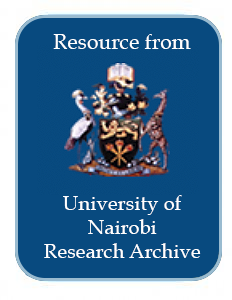Location
Our Vision is to be a world-class university committed to scholarly excellence.
Our Mission is to provide quality university education and training and to embody the aspirations of the Kenyan people and the global community through creation, preservation, integration, transmission and utilization of knowledge.
Core Values
In order to realize the above vision and mission, certain shared values shall be nurtured. There is great need for the University to be guided by the right values derived from the virtues and moral standards of the Kenyan and wider society.
Core Functions
Teaching and Learning: The university offers innovative , relevant and market driven academic programmes , both at undergraduate and postgraduate levels with inbuilt quality control systems the university also provides an environment and policy framework for undertaking high quality and relevant research
Members:
Resources
Displaying 246 - 250 of 298The agricultural potential in arid and semi-arid lands in Kenya: a case of Masongaleni settlement scheme
This study set out to analyze the agricultural potential in
a newly settled Masongaleni Settlement Scheme being an example
of an Arid and Semi-Arid land. The potentials here are the
under-utilized rainfed, irrigated agriculture and livestock
production particularly bee keeping. A comparison of selected
rainfed crop yields from Masongaleni Settlement Scheme and
similar ~cological areas is used to identify the potentials of
the &chem~.
On the irrigated crops, the study compares the farmers'
Effect of deforestation on soil fertility on the northwestern slopes of Mt Kenya
The area northwest of Mt Kenya is undergoing rapid land use changes caused by a population influx. Rapid population growth and subsequent pressure on land raise the problem of how to increase and sustain agricultural production while at the same time conserving the natural resources (montane forest with Olea africana and Juniperus procera as main species at 2900 m asl.). Deterioration in soil physical and chemical properties following deforestation for agriculture can adversely affect crop production, especially from soils on mountain slopes.
In land we trust: environment, private property and constitutional change.
The relationship between land ownership and the sustainable use of natural resources is examined within the context of constitutional change in Africa. Using Kenya as an example, it is demonstrated that current constitutional arrangements put excessive emphasis on the protection of private property rights without requiring the corresponding duty of ecological stewardship. This has resulted in the failure of government policies and development practices to fully integrate environmental considerations into growth strategies.
Classification of Land Use of Major Soils Along Lake Victoria Swampland Area, Kenya
Land suitability evaluation for agriculture around Timau area - Heru District
A study was conducted of about 8000 ha around Timau area
in Meru District to evaluate its land suitability for
agriculture. A semi detailed soil survey was carried out to
classify and map the different soil units. Based on the
relevant land qualities of each Soil Unit and physiography
they were seperated in 15 Soil Mapping Units for the various
Land Utilization Types with land use recommendations given.
The following land qualities were rated and used to assess the
suitability of each Soil Mapping Unit: soil water retention,



